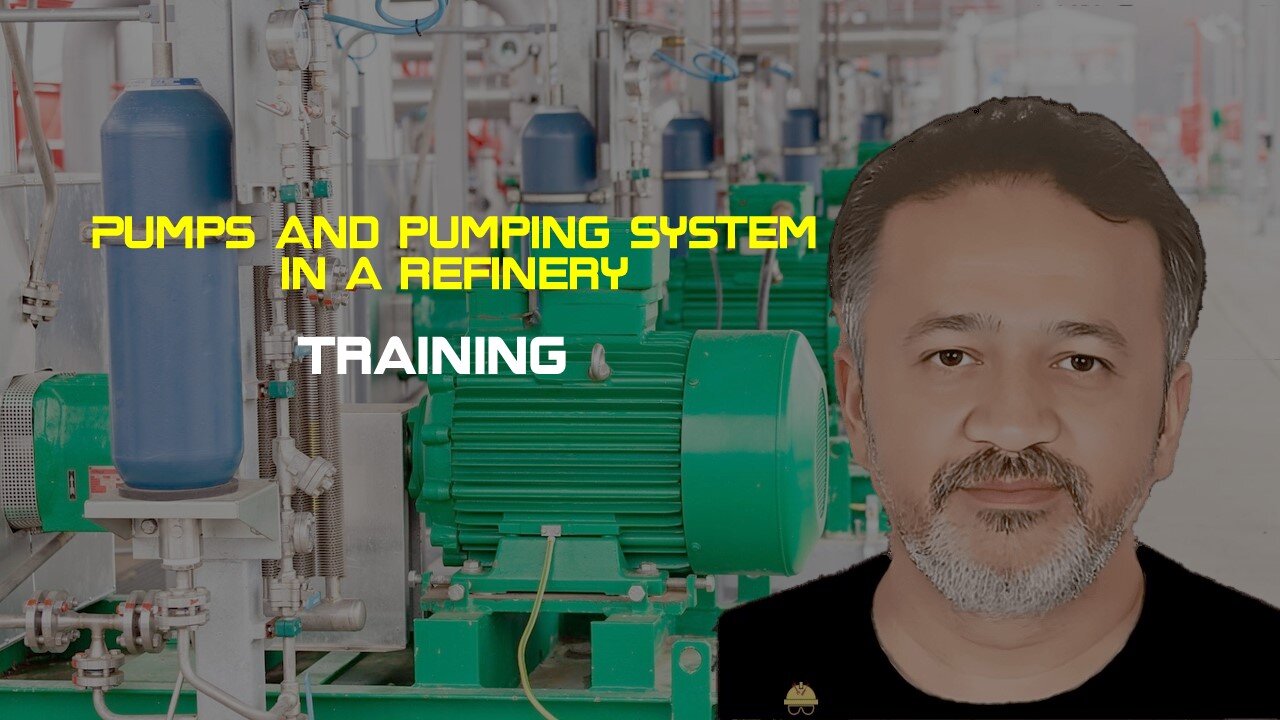Premium Only Content

Pumps: Understanding the Basics for Beginners| Mastering Pump Systems: Techniques and Best Practices
Pumps: Understanding the Basics for Beginners| Mastering Pump Systems: Techniques and Best Practices:
Pumps are mechanical devices designed to move fluids from one location to another. They play a crucial role in various industries and everyday life by enabling the transfer of liquids or gases in a controlled manner. Pumps are used to transport fluids in systems such as water supply networks, oil and gas pipelines, chemical processing plants, HVAC systems, and many more.
The primary function of a pump is to create flow and generate pressure to move the fluid through pipes or channels. This is accomplished by utilizing mechanical energy, typically supplied by an electric motor or an engine, to drive the pump's internal components.
There are different types of pumps, each suited for specific applications and fluid characteristics. The two main categories of pumps are centrifugal pumps and positive displacement pumps.
Centrifugal pumps work by converting the rotational energy of an impeller into fluid velocity. The fluid is drawn into the pump, accelerated by the rotating impeller, and then discharged at a higher pressure. These pumps are commonly used for high-flow, low-viscosity fluids.
Positive displacement pumps, on the other hand, operate by trapping fluid in a chamber and then pushing it out, providing a fixed amount of flow per revolution. These pumps are suitable for both high and low viscosity fluids and are commonly used for applications requiring precise flow control.
Pumps consist of several key components, including an impeller or rotor, a casing or housing, inlet and outlet ports, and various seals and bearings. The impeller is responsible for imparting energy to the fluid, while the casing directs the fluid flow and provides structural support. Seals are used to prevent leakage, and bearings support the rotating components.
Efficiency and reliability are crucial factors when it comes to pumps. Proper selection, sizing, and maintenance are essential to ensure optimal performance, minimize energy consumption, and maximize the lifespan of the pump. Safety considerations, such as proper installation and protection against overpressure or cavitation, are also critical to prevent damage and ensure safe operation.
In summary, pumps are mechanical devices used to move fluids by generating flow and pressure. They are integral to various industries and applications, enabling the efficient transportation of liquids or gases. Understanding the different types of pumps, their components, and their operating principles is key to utilizing them effectively in various systems and processes.
-
 1:09:03
1:09:03
vivafrei
4 hours agoCriminals Are Getting Nervous! Democrats Can't Give Trump Credit! AND MORE!
72.4K28 -
 12:56
12:56
Dr. Nick Zyrowski
8 days agoFasting Is THE Cure: No Food For 2 Days Is The Perfect Fast! (Here’s Why)
6.3K6 -
![MAHA News [10.10]: Cannabis Reform, Kennedy Exposes "Vaccines Saved Lives", An Inconvenient Study](https://1a-1791.com/video/fwe2/09/s8/1/-/k/v/p/-kvpz.0kob-small-MAHA-News-10.10.jpg) LIVE
LIVE
Badlands Media
17 hours agoMAHA News [10.10]: Cannabis Reform, Kennedy Exposes "Vaccines Saved Lives", An Inconvenient Study
469 watching -
 1:51:23
1:51:23
The Quartering
5 hours agoTrump Snub Backfires, Matt Walsh Sounds The Alarm, Candace Owens Theory On Charlie Kirk
104K55 -
 LIVE
LIVE
Owen Shroyer
1 hour agoOwen Report - 10-10-2025 - Qatari Airbase In America Angers Israeli Lobby
1,249 watching -
 1:14:53
1:14:53
DeVory Darkins
5 hours ago $14.74 earnedDemocrat Candidate leaves crowd DUMBFOUNDED as Trump scores MAJOR VICTORY
67.7K24 -
 1:12:16
1:12:16
Sean Unpaved
5 hours agoTNF Shocker: Giants Stomp Eagles, Cubs Claw a Game 5, Weekend NFL/CFB Best Bets!
29K7 -
 1:25:05
1:25:05
HotZone
10 hours ago $3.21 earned5 Signs Terrorists are Plotting a Massive US Strike
17.7K12 -
 1:05:42
1:05:42
Dear America
5 hours agoShould Christians Celebrate Halloween?
30.6K16 -
 2:03:24
2:03:24
The Culture War with Tim Pool
6 hours agoAntifa Is A Terror Organization, Crackdown Coming As Leftists Defend Violence | The Culture War
179K169